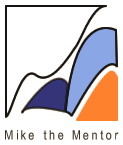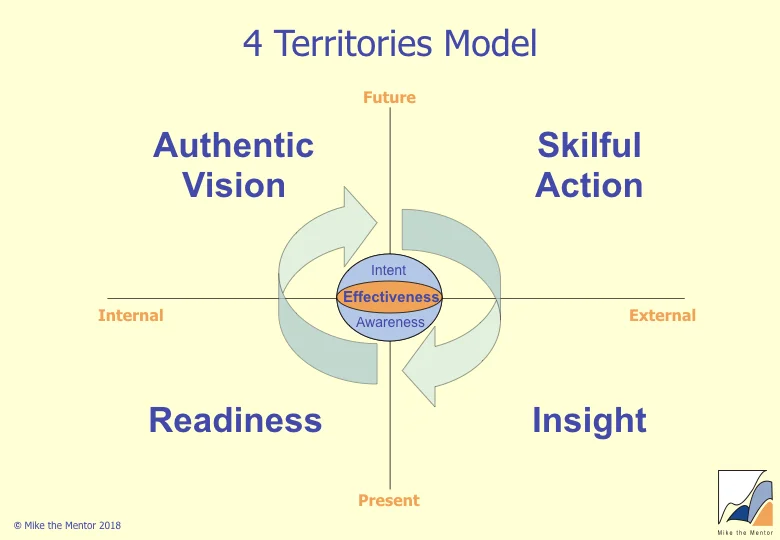The 4 Territories Model
/The 4 Territories Model is a flexible change framework that can be used to better understand and apply change processes at the individual, group and organisational levels, and to moment to moment interactions through to long term interactions. The model as described here applies to an individual seeking to create change. It is also used by teams or organisations seeking to create change. (The 4 Territories Model has also been known as The Jericho Model and The Renewal Model.)
The Framework
The model describes coaching as consisting of two fundamental elements:
the purpose of the coaching, and
the means by which that purpose is achieved.
The purpose of coaching is always to help the coachee change something - to improve their performance, to develop their leadership qualities, to enhance their partnership skills, to realise their vision, or whatever. This movement from where they are ("Here" or "Present") to where they want to be ("There" or "Future") provides one dimension of the model.
The means by which the coachee gets from Here to There is though their interaction with their environment. This relationship between Internal and External provides the second dimension of the model. (This framework is derived from Danielle Roex's Right Relations work.)
Combined, these two dimensions create the 4 territories Wheel which describes a change process made up of four phases; Readiness, Authentic Vision, Skillful Action, and Insight.
Readiness describes the process of developing autonomy, responsibility, and the ability to choose freely unconstrained by personal history. When working in this phase, the coach's stance is nurturing and supportive and aims to help the coachee develop a strong positive self image and sense of self worth so that they have a solid, stable foundation to their lives. The basic question which the coachee seeks to answer in this phase is "Who am I?".
Authentic Vision involves connecting with a sense of purpose, identifying and choosing values, creating a compelling and stretching vision which is aligned to and supports the corporate vision, and committing to realising it. A key skill at this stage is the ability to create and hold a tension between the current reality and the vision. Without the ability to hold this tension, the vision merges with the current reality and merely reinforces the status quo. The coach's role is to inspire the coachee and to help them answer the question "Where am I going?"
Skillful Action consists of identifying the goals which will lead towards the vision, deciding on the strategies and actions to achieve these goals, and then taking effective and skillful action. The coach's role here is to help the coachee answer the question "How will I achieve my vision?". This may include helping the coachee improve specific management skills in areas such as communication, team leading and time management.
Insight is the process of getting feedback from the environment about what is being achieved and the extent to which the vision is being realised and its achievement sustained. When the coachee is able to see clearly what they are creating and to take responsibility for both their successes and failures, then there is the opportunity to learn from experience and gain insight into the changes necessary to deliver and expand their achievement of their vision. The role of the coach is to challenge the coachee to see clearly the impact of what they are doing and to help them answer the question "Am I creating my vision?".
Underpinning the whole coaching process is the development of two key skills - the ability to be self aware and the ability to exercise will or intent. The development of these two skills provides the underlying context for the coaching process and the degree to which the coachee enhances these two skills is one of the best indicators of the extent to which the coaching process has created lasting changes in the coachee's effectiveness.
Experience has shown that executives can readily understand this framework, that it provides a meaningful way to think of their own change process, and that it reflects their experience of the coaching process.
A more detailed description of this framework can be downloaded here.

